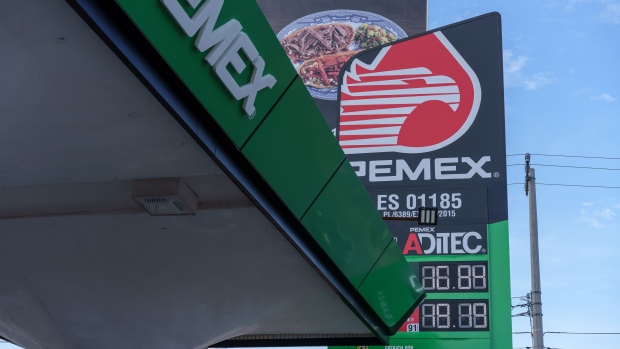Jul 28, 2022
Pemex Sees $6.5 Billion Profit Surge Despite Weak Output Growth
, Bloomberg News

(Bloomberg) -- Petroleos Mexicanos reported a record profit in the second quarter of 131.5 billion pesos ($6.45 billion) as international oil prices surged, even though crude output continued to wane.
Thanks to the price rally, the company known as Pemex said it will keep making its own debt payments as it no longer needs the government to do so for the rest of the year.
“Today, the face of Pemex is very different,” said Pemex Chief Executive Officer Octavio Romero Oropeza during an investor conference call on Thursday.
Even so, much of Pemex’s windfall from oil exports ends up in state coffers and is being used to subsidize fuel prices for Mexican consumers, leaving little opportunity for re-investment. And while the driller reported Thursday that oil and condensate production rose 1.1% in the second quarter from the previous one, crude output alone fell close to 2% in the same period, according to data from the nation’s regulator.
President Andres Manuel Lopez Obrador has promised to rescue the government-owned oil company by returning much of Mexico’s energy industry to state hands, thereby reducing competition for Pemex. He is seeking to make the country self-sufficient in energy by having Pemex increase its crude processing to sell fuel domestically and shed its dependence on gasoline imports.
Pemex is under significant financial pressure, facing the highest debt of any major oil company, long-term production declines and staggering cost overruns. At the end of June, its financial debt was $108.1 billion.
Production of its flagship Maya crude is declining as its top oil fields mature and the company abandons deepwater exploration in favor of boosting the nation’s fuel-processing capacity.
Mexico’s New Oil Refinery’s Cost Rises to as Much as $18 Billion
Pemex’s crude oil output has declined every year for the past 17 years, according to data from the nation’s oil regulator CNH and Pemex. The company touts stabilizing output by including condensate, a light oil used to mix with heavier grades, in its production data. Pemex’s condensate volume last year was almost 10 times higher than in 2018, according to CNH data.
In early June, Pemex undertook a commercial debt refinancing to pay debts with offshore service providers and suppliers. The novel bond issuance fell short, however, underscoring the lack of market confidence in the Mexican driller.
Pemex Suppliers Lose Big With Bonds After Surprise Debt Swap (1)
The company has said it will reduce methane emissions by 2% by 2024 with an investment of $2 billion from its own resources and international credits. Pemex’s gas flaring, which results in methane emissions, rose 9.7% in the second quarter compared to the previous one. Last year, its scope 1 carbon emissions -- those directly generated by the company -- climbed 8% from a year earlier.
While Pemex said in its earnings report that it will pay its own amortizations this year, its executives left the door open to changes.
“Government support for the coming years is dynamic,” Pemex Acting Chief Financial Officer Antonio Lopez-Velarde said on a call with investors. “For the remainder of the year it will depend on market conditions and the financial situation of Pemex and the same will apply in 2023. It’s something we’ll be discussing throughout this year.”
(Updates with information from earnings report and calls throughout.)
©2022 Bloomberg L.P.


